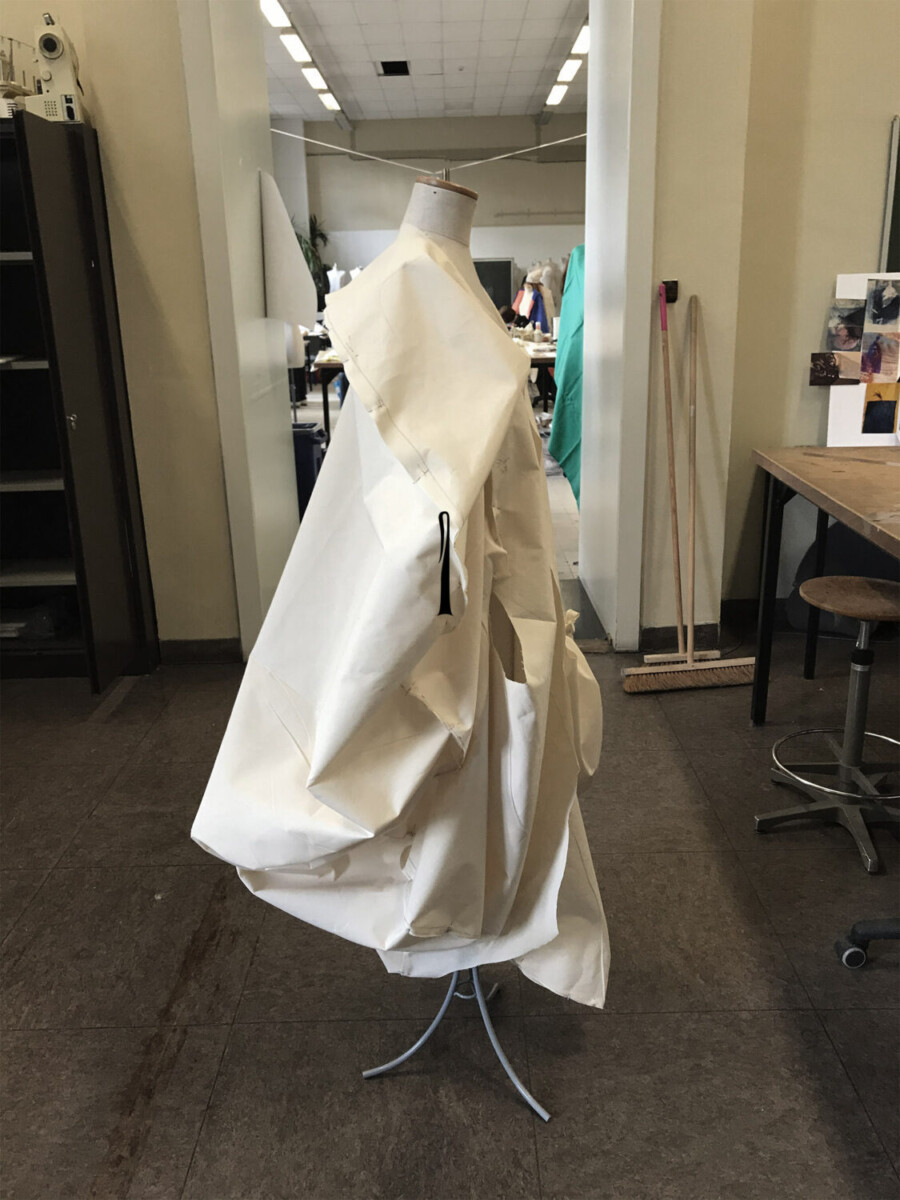Christensen Raveendran
Quirky math and circular dimensions in Raveendran’s vativam

During Triggers our graduating fashion students showed their work. Master student Christensen Raveendran showed his project Vativam there.


ONRUST
Christensen, I was about to say that my something something is a little rusty, but I don’t even know what language ‘vativam’ is supposed to be in. It is a word, right?
CHRISTENSEN RAVEENDRAN
It’s Tamil, my mother tongue. Vativam means shape. But don’t worry, the opaqueness is quite deliberate
ONRUST
How’s that?
CHRISTENSEN RAVEENDRAN
Well, my project started with considerations about garment patterning. Take for instance that t-shirt you are wearing. Ob-vious-ly, it is a three-dimensional shape. But you could also look at it as a two-dimensional piece of fabric, sewn in a particular way. Would you be able to imagine the form of that piece of fabric?


ONRUST
Probably not.
CHRISTENSEN RAVEENDRAN
Well, you’re no exception. To most of us, the relation between the two-dimensional pattern and the resulting three-dimensional shape is – well – opaque. This hasn’t been always the case. In earlier days, when people still made their own clothes, they must have had a better understanding. With the invention of the sewing machine, however, garment design became increasingly complex. Industrialization and consumerism wiped out the transparency of the design process. Nowadays, people haven’t the slightest idea what an original pattern looks like.
ONRUST
Is that a bad thing?
CHRISTENSEN RAVEENDRAN
Not necessarily. It’s just a fact. In my project, however, I’ve been looking to accom-modate a more circular experience. Circular in the sense that an observer would be able to more naturally shift between different levels: pattern, textile, garment and pattern again. If not that, at least what I’m doing is foregrounding the hierarchy between them.
ONRUST
I don’t suppose you mean to send us to school?
CHRISTENSEN RAVEENDRAN
On the contrary. In fact, I thought it important to first get rid of this idea of the creative genius. You know, the brilliant fashion designer that makes clothing beyond understanding. I was inspired by the architecture of Michael Hansmeyer. He uses a computer algorithm to generate very intricate forms and shapes, which he then goes on to 3D print. What fascinated me was the fact that a simple formula at the base dictated a simple process, folding. The result however was very complex. It is no coincidence that the subtitle of my project is 1 + 1 = 3.


ONRUST
But aren’t computers and algorithms exactly the kind of black boxes that the brains of creative geniuses are supposed to be?
CHRISTENSEN RAVEENDRAN
Probably yes. At least in some cases. But the main thing was to introduce a sense of randomness, chaos if you like. I mean, you could as well do it by throwing a can of paint out the window and look at the stains. By using a computer, I downplay the role of human proficiency. That changes the way people approach a piece of clothing since it follows that everyone can be a designer.
ONRUST
So you used a program?
CHRISTENSEN RAVEENDRAN
Yes, a program that generates patterns, based on Processing. The algorithm involves a circle and a certain equation with variables, which turns it into a lissajous curve. This complex harmonic motion helps me to make dress patterns. You know, a dress is in essence a very simple thing. It’s a piece of fabric with holes in it. The program, basic as it is, allows for a remarkable transformation. So to sum up: simple figures plus simple process equals complex dress.


ONRUST
What kind of material do u use?
CHRISTENSEN RAVEENDRAN
I got a sponsorship from MajoTech, an Italian company that produces textiles. Obviously, I needed a material that would be able to support a complex shape. So, no linen or anything like that. In the end I chose very stiff materials, based on resins, wax and paint. They have a certain weight and particular structure.
ONRUST
Does that make for a comfortable dress?
CHRISTENSEN RAVEENDRAN
It sure is possible to wear them. My girlfriend tried them all on. But yes, first and foremost the whole idea is theoretical. I wanted to develop a conceptual approach to garment making, that doesn’t really use specialized skills or that requires access to large studios or machines. A sustainable practice.
ONRUST
There’s no fashion show anymore. So how will you present your project?
CHRISTENSEN RAVEENDRAN
As a small exhibition. This allows me to really show this dynamic from flat a pattern to a three-dimensional dress. A deconstruction of reconstruction of sorts. The genesis of a shape.
Text: Régis Dragonetti.
















